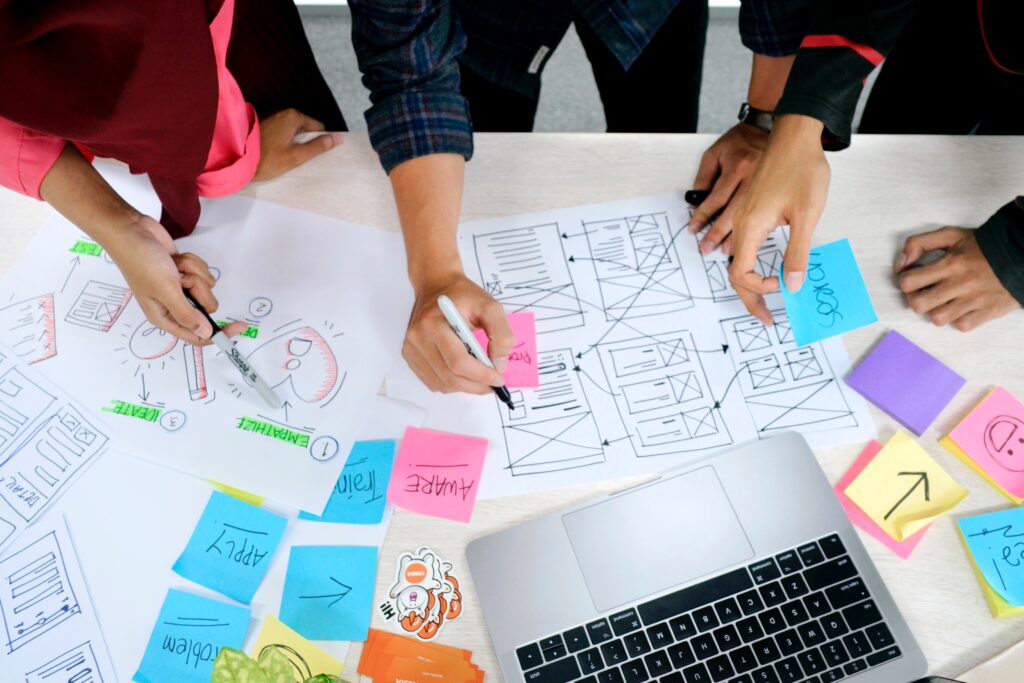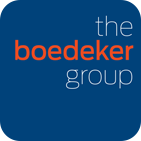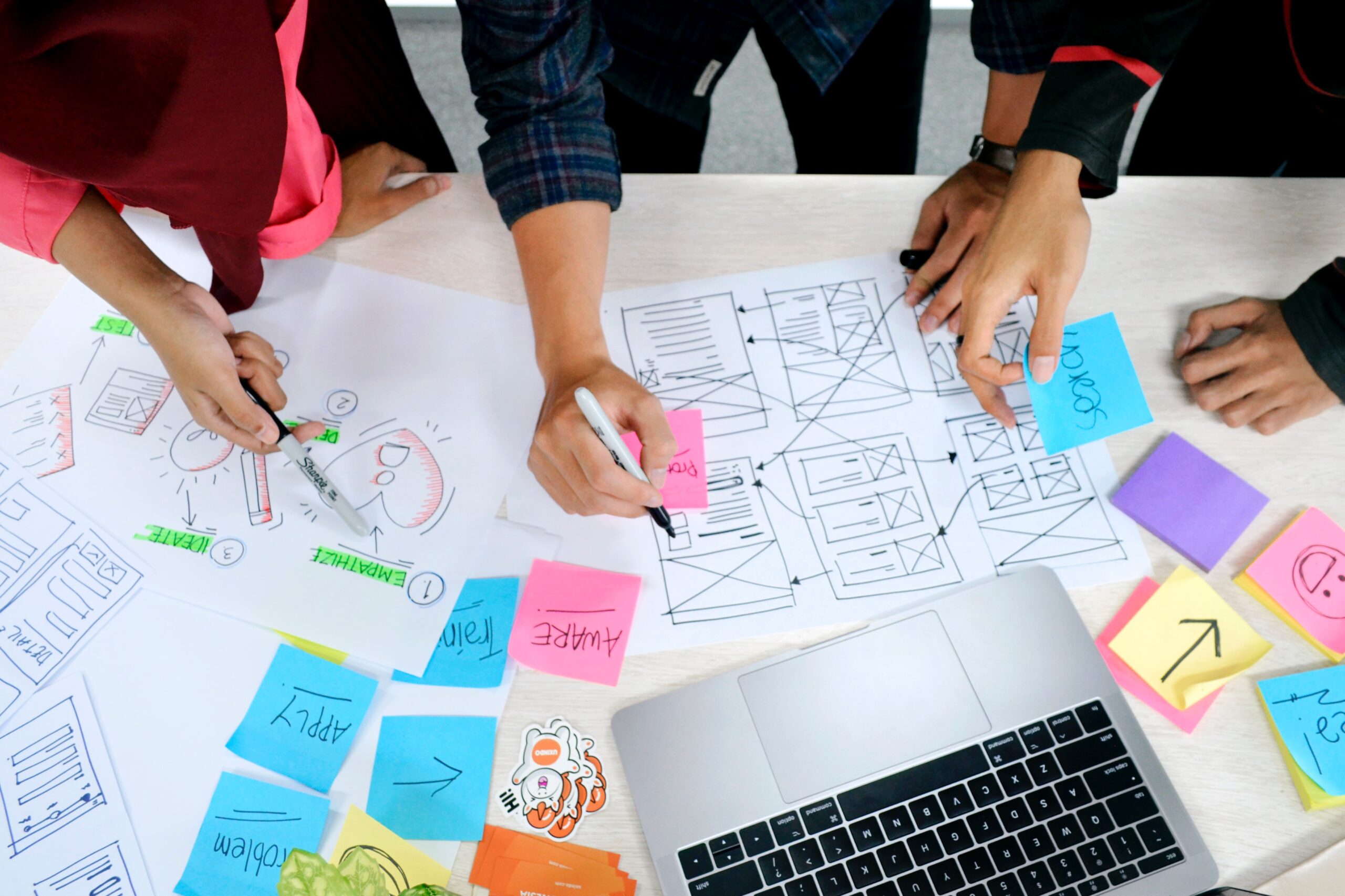
By: Gina Boedeker
I love design thinking workshops, but let’s get one thing out of the way immediately – design thinking is not just for designers.
Rather, a design thinking workshop is a collaborative and interactive session that uses the principles and techniques of design thinking to solve complex problems, generate innovative ideas, and drive creative solutions.
It allows us to bring together participants from diverse backgrounds who have different perspectives to better understand a challenge and/or to come up with solutions.
More voices = better solutions.
A well-run design thinking session focuses on deeply understanding the needs and desires of users, customers or potential customers. And, as I wrote about recently, assuming you know what your customers want is a recipe for disaster.
Bringing the ideas of design thinking into a focus group can seem overwhelming, but the five steps below give a roadmap to a successful session:
🙏 Empathy Mapping: Begin the design thinking session by creating empathy maps for each participant in the focus group. These maps help identify and understand the needs, desires, and pain points of the target audience. Participants can use sticky notes or digital tools to brainstorm and capture their thoughts related to the user’s perspective, emotions, actions, and thoughts.
💡Ideation Exercises: Engage the participants in a series of ideation exercises to generate a wide range of ideas and potential solutions. Encourage participants to think outside the box and build upon each other’s ideas. Techniques like brainstorming, mind mapping, and “Crazy Eights” (where each participant sketches eight ideas in eight minutes) can be used to stimulate creativity and generate diverse perspectives.
📐Prototyping and Feedback: Allow the focus group participants to build simple prototypes or mockups of their ideas using low-fidelity materials such as paper, cardboard, or digital prototyping tools. These prototypes should be quick and easy to create. Afterward, gather feedback from the group, allowing participants to iterate on their designs based on the input received. This iterative process fosters collaboration and refinement of ideas.
📖 Storytelling and Scenario Mapping: Encourage participants to tell stories or create scenarios that illustrate how their proposed solutions would work in real-life situations. This technique helps the group visualize the user’s journey and gain deeper insights into the practical implications of their ideas. Storyboards, role-playing, or even creating comic strips can be effective tools for storytelling and scenario mapping.
☑️ Dot Voting and Prioritization: Use dot voting or other prioritization techniques to narrow down the ideas and identify the most promising solutions. Provide participants with a set number of dots or votes they can allocate to the ideas they find most valuable or feasible. This exercise helps the group reach a consensus on which ideas to focus on, ensuring a more focused and efficient design process.
Ultimately, the effectiveness of a design thinking session depends on the facilitator’s ability to create a safe and inclusive environment, encourage active participation, and manage time effectively.
Done right, your focus group will not only be productive but extremely engaging as well.

